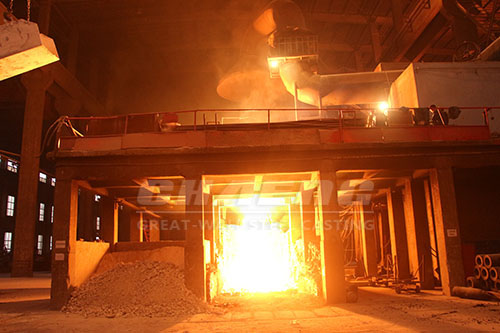Cast steel vs Cast iron, differences between steel castings and iron castings

The difference between the nature of cast iron and cast steel is the difference of chemical composition. In engineering, it is generally believed that carbon content of iton is higher than 2%, while that of steel is below this value.
The different composition results in the different organizational performance. In general, the plasticity and toughness of steel is better, so its performances of elongation, cross-section shrinkage and impact toughness are good, while iron mechanical properties are hard and brittle.
Next, let us introduce several common cast iron and cast steel materials, as well as their different material properties and structural characteristics.
I. Cast steel
Cast steel is a kind of carbon iron alloy material containing carbon less than 2.11%.
1. Cast carbon steel.
It contains carbon as the main alloying element and contains a small amount of other elements. Low carbon steel has carbon content less than 0.2%, medium carbon steel has 0.2%-0.5%, and high carbon steel has more than 0.5%. With the increase of carbon content, the strength the hardness of cast carbon steel increase. Cast carbon steel has a high strength, plasticity and toughness, suitable to manufacture heavy load parts used in heavy machinery.
2. Cast low alloy steel.
Low alloy steel contains manganese, chromium, copper and other alloy elements. It has a large impact toughness, and obtain better mechanical properties through heat treatments. Casting low alloy steel has better performance than carbon steel, can reduce the weight of parts and improve the service life.
3. Cast special steel.
Special steel is the alloy stell to meet the special needs, with a wide variety, usually containing one or more high amount of alloying elements to obtain a special performance.
II. Cast iron
1. Cast gray iron
Gray cast iron is cast iron containing flake graphite. It is the most widely used cast iron, accounting for more than 80% of the output of cast iron. Comprehensive mechanical property of gray cast iron material is low, and compression strength is good. Its Vibration capacity is 10 times stronger than steel, so it is often used to create the bases bearing vibration.
2. Vermicular graphite iron
Vermicular cast iron is a worm-like cast iron. The mechanical properties of vermicular graphite cast iron are slightly better than that of gray cast iron, but slightly inferior to ductile iron, and its impact toughness, elongation compressive strength, yield strength and so on are also between the two. The wall thickness changes impact on its mechanical properties is smaller than that of cast grey iron.
Vermicular graphite cast iron is often used to make the parts used in harsh working temperature environmen, and large parts with complex geometric shapes.
3. Ductile iron
Ductile iron is a kind of high strength cast iron material developed in the middle of the last century. Its comprehensive performance is high, close to steel, and it is widely used in industry.
Ductile iron can be used to make parts that work in the 300 to 400°C environment. Its mechanical properties are less affected by changes in chemical composition, so the yield is higher relative to other cast iron materials. Due to the large volume shrinkage, and the small line shrinkage, it is easy to form shrinkage cavity and porosity, cast ductile iron are usually designed to thickness uniform structure, trying to avoid thick sections.
CHAENG | Great Wall Steel Casting is a large manufactuer specialized in large steel castings such as: a variety of non-standard large gear ring, smelting slag pot, cast steel nodes, grinding table and grinding roller, etc., according to customers' drawings and process requirements. At present, the United States, Mexico, Denmark, India, the Netherlands, South Korea, and so many foreign steel mills, smelters, building material factories and so on are in the use of large steel products made by Great Wall Steel Casting.
